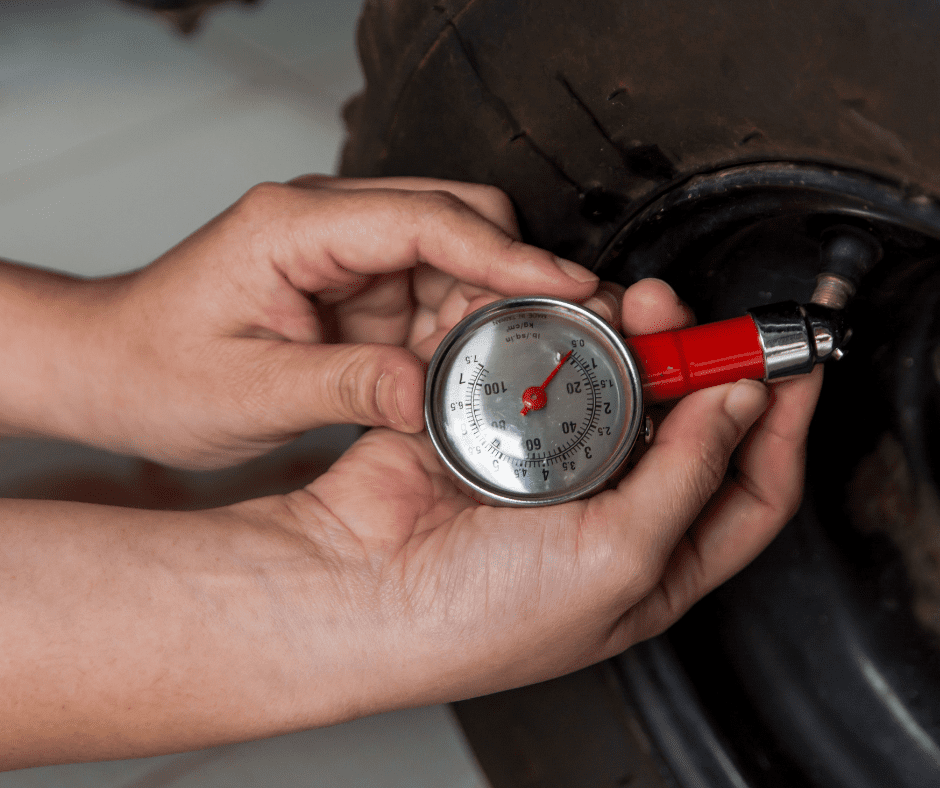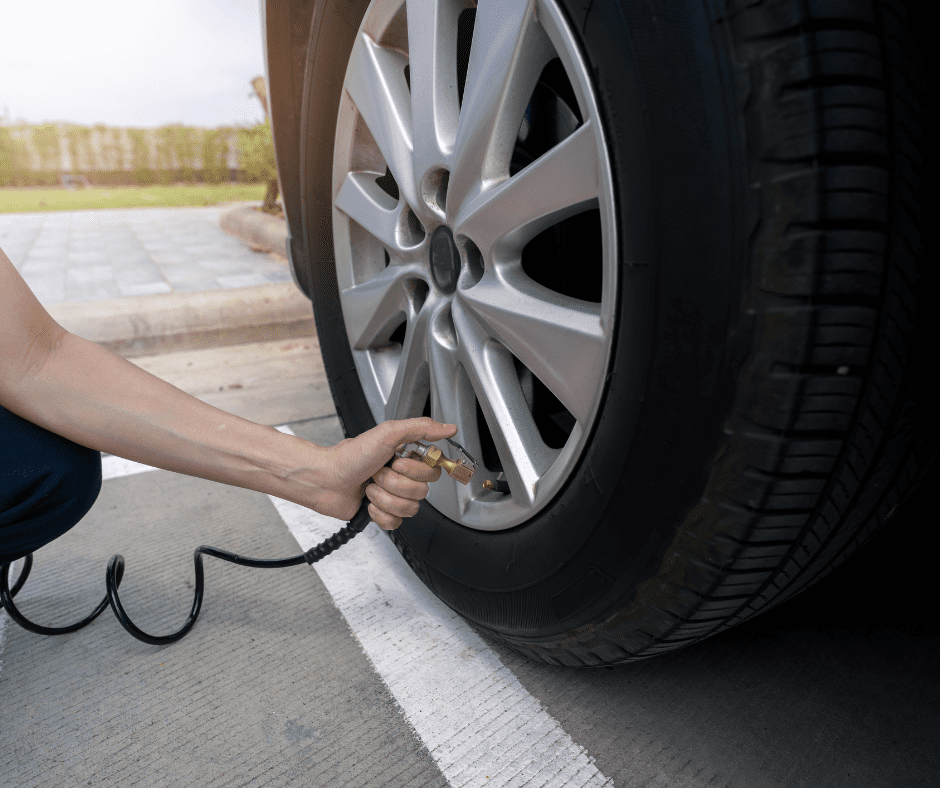Maintaining the correct tire pressure is essential for optimal vehicle performance. It plays a critical role in the safety, fuel efficiency, and longevity of your vehicle’s tires. Ensuring your tires are inflated to the proper pressure can save you money, extend the life of your tires, and keep you safe on the road.
Why Tire Pressure Matters
Tire pressure refers to the level of air in the tires of a care, measured in pounds per square inch (PSI). Proper tire inflation is crucial as it affects various aspects of vehicle performance including fuel efficiency, tire wear, and driving safety.
Properly inflated tires reduce rolling resistance, which is the energy your vehicle needs to move forward on the road. Tires at the correct pressure level can improve fuel efficiency by up to 3%. Correct tire pressure also maintains the structural integrity of your tires.
Underinflated tires can lead to increased wear and tear, particularly on the edges of the tire, leading to quicker deterioration. They also increase rolling resistance, which means your vehicle must work harder to move forward, thus consuming more fuel.
Conversely, overinflated tires can be just as harmful. They reduce the amount of tire that comes into contact with the road, which can decrease traction and increase your stopping distances, especially in wet conditions, which can increase the risk of accidents. Overinflation also makes your ride harsher and can exacerbate the impact from potholes and other road imperfections, risking damage to the tires and the wheels.
How to Check Tire Pressure
Checking your tire pressure is a simple process that should be done monthly and before long trips. Here’s how to ensure your tires are properly inflated:
Start with Cold Tires:
Ideally, check your tire pressure when the tires are cold, meaning the car has been parked for at least three hours or hasn’t been driven more than a mile at moderate speed. This provides a more accurate reading.
Find the Recommended Pressure:
Check your owner’s manual or the placard on the driver’s side door jamb for the recommended tire pressure for your vehicle. This is not the number on the tire sidewall, which indicates the maximum pressure the tire can handle.
Use a Tire Pressure Gauge:
Place the pressure gauge on the valve stem and press down firmly until the hissing sound stops and you get a reading. Digital gauges are more accurate, but make sure they are properly calibrated and the batteries are fresh.
Adjust as Necessary:
If the reading is under the recommended pressure, add air until you reach the correct pressure. If overinflated, release air by pressing on the metal pin in the center of the valve with the gauge or a similar tool until you reach the proper level.
Check All Tires:
Make sure to check all tires, including the spare. Even if only one tire is visibly underinflated, it’s important to check each tire to ensure they are all at the correct pressure level.
Repeat Monthly:
Tire pressure can decrease due to drops in temperature or natural seepage, so regular monthly tire pressure checks are necessary to maintain optimal pressure levels.

How to Put Air in Tires at a Gas Station
Locate an Air Pump: Most gas stations have an air pump available. Sometimes there’s a fee, so bring some loonies and toonies.
Remove Valve Caps and Press the Air Hose Fitting onto the Valve Stem: Make sure it is seated well to avoid air leakage.
Fill the Tires: Fill each tire by pressing the air pump lever. Keep checking the pressure and adjust accordingly until the correct pressure is achieved.
Replace Valve Caps: Don’t forget to replace the valve caps to keep dirt out and prevent air leaks.
Maintaining correct tire pressure is not just about prolonging the life of your tires or saving fuel—it’s a straightforward but crucial aspect of car maintenance that significantly affects safety. Get your tires checked to ensure your tires are well cared for so they can perform at their best, which keeps you safer on the road.
FAQ on How to Check Tire Pressure
1. What PSI should my tires be at?
The recommended PSI for your tires can be found in your vehicle’s owner’s manual or on the placard inside the driver’s side door jamb.
2. Where should you look for your vehicle’s tire pressure information?
Look for tire pressure information in your vehicle’s owner’s manual or on a placard located on the edge of the driver’s door, the doorpost, or inside the glove box lid.
3. How often should I check tire pressure?
You should check your tire pressure at least once a month and before going on long trips.
4. How accurate are gas station air pumps?
Air pumps at gas stations can vary in accuracy. It is recommended to use your own tire pressure gauge to check the pressure after filling tires at a gas station.
5. Can temperature affect tire pressure?
Yes, tire pressure can decrease with dropping temperatures, approximately 1 PSI for every 10 degrees Fahrenheit. It’s crucial to check tire pressure with seasonal temperature changes.
